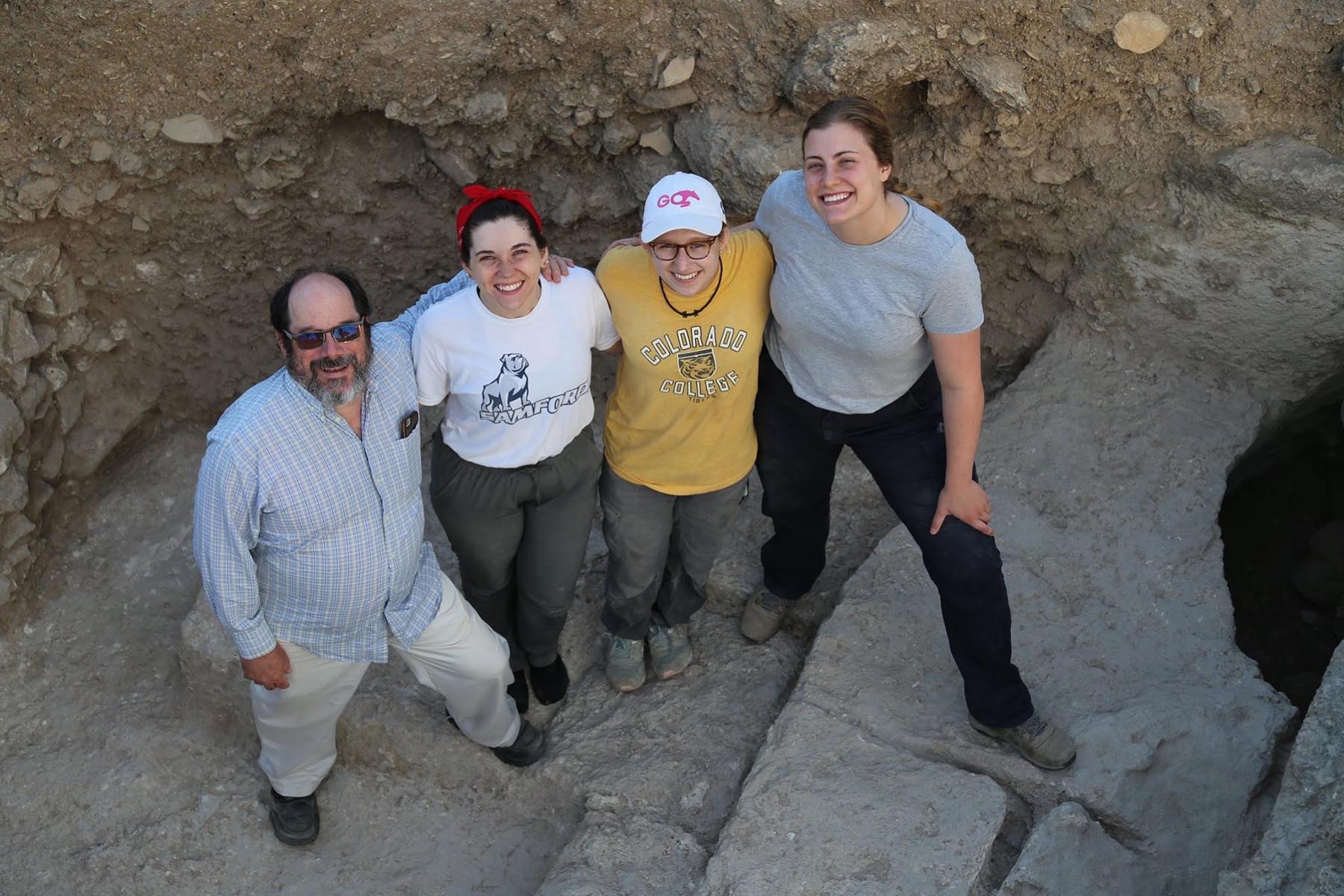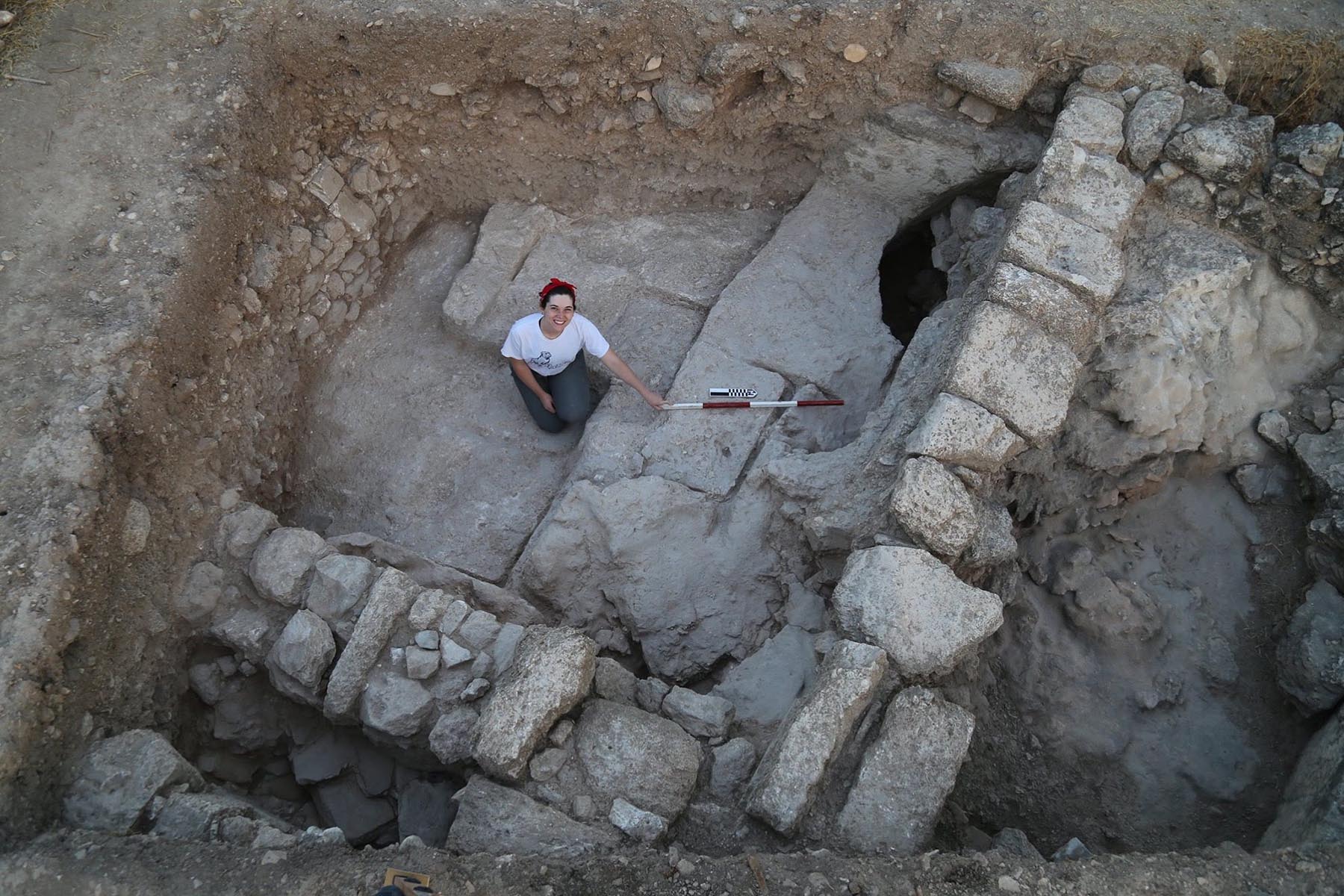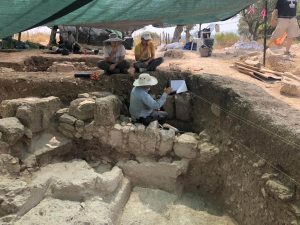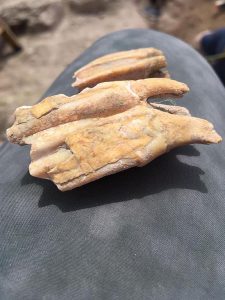
2019 STRANGE-MIDKIFF FELLOWSHIP FIELD REPORT: JEWEL TRAIL
I spent the first four weeks of my summer in the Galilean heat (which is considerably more bearable than the heat in the southeastern United States). Our dig site was on a hillside outside of Nazareth, Israel. Kefar Shikhin, also known as Asochis, is just outside Sepphoris. I immediately felt comfortable in the familiar scientific setting of diligent data collection taught at the Shikhin Excavation Project’s field school. Despite archaeology being one of the newest social sciences, recently developed methods mirror the accuracy and completeness of research methods in established natural science research.
The Shikhin Excavation Project utilizes stratigraphic excavation, which distinguishes itself from other methods by recognizing that each element of the site contains valuable data. Dr. James F. Strange used to say, “the dirt is evidence.” Stratigraphic excavation focuses on the unique characteristics of each strata and the data that can be obtained from individual loci. Just as a slight change in color, smell, viscosity, particle size, or any other empirical change is recorded in a chemistry research lab, analogous changes on an archaeological excavation are recorded in a square’s field book. Examples of these analogous changes are the all-important three Cs (color, compaction, and contents); elevations; daily and weekly top plans; and daily photographs and conclusions. Careful recording of all details reflects the gravity and responsibility that archaeologists take on when excavating a site.


From the beginning of the dig until publication, the individual steps of the entire excavation process correspond to the steps of the scientific method:
Step 1- Make an Observation: Archaeologists must make initial observations about where or what they want to excavate. When archaeologists are deciding where to dig, they look for solid clues that indicate a site is a strong candidate for excavation. In the case of Shikhin, Dr. James Riley Strange took into account the proximity to Sepphoris, textual evidence, and the physical remains in the topsoil when deciding to open an excavation at Shikhin.
Step 2- Formulate a Question: After looking at the available evidence, researchers decide what questions can be asked of an excavation site, and what insights could be gained from excavating there. Questions are developed from analyzing all relevant sources. Sources are often textual, but material evidence will also effect the specific questions asked.
Step 3- Develop a Hypothesis: Once the archaeologists have decided what questions they want to answer, they build a probable hypothesis based on their observations, textual evidence, and other cultural evidence. The hypothesis is designed to address all of the questions the archaeologists will ask of the site.

Jewel and her square-mate get a lesson on balk drawing from field director Dr. James Riley Strange during fruit break.
Step 4- Design the Experiment: Deciding how to lay out the excavation’s grid (or lack of a grid) is very similar to a natural scientist designing an experiment. In this step, the approach and operating procedures are brainstormed, perfected, and enacted. In archaeology, this includes: determining the location of fields, evaluating the relationship of the remains to the cardinal directions (e.g. structure walls need to cross perpendicular to baulks), using the traditional “square” or finding the most beneficial geometric shape, and optimizing the size of the “squares” (or other geometric shape of choice), among other considerations. The excavations at Shikhin utilized a north-south grid of 5 x 5m squares.
Step 5- Test the Hypothesis: This is arguably the most exciting part of the entire process. At this point you get out into the field and dig! While written records are a great resource for testing a historical hypothesis, the physical remains that a group of people leave behind are invaluable. For example, Shikhin is a Jewish village and likely had its own synagogue. Josephus, however, reports Christian activity taking place alongside the Jewish practices. If the archaeologists at Shikhin would like to explore this facet of life at this site, the only way to search for answers is to find the physical evidence.
Step 6- Make Modifications: Without fail, a dig will encounter obstacles along the way that require a change in the plan of action. These obstacles can result in abandoning a square that is not producing adequate data, changing a hypothesis mid-season, realizing that some element of the designed excavation method is not working, or deciding to open another field. Thus, modifications may be necessary mid-season or between seasons and must be based on and take into account all preliminary conclusions. The evidence that is uncovered is necessary to make the appropriate changes to the excavation method and hypothesis. In the field, balk drawings are an excellent way to evaluate what modifications need to be made to the original excavation plan. Balk drawings are crucial for analyzing the stratification of a square and relating loci to one another, and they combine a lot of information into one visual resource.
Step 7- Tell Others: After the dig season is over, the final step of the archaeological scientific method begins. Before scholars can write the paper and have it published, the original hypothesis must be compared to the modified hypotheses and all data carefully considered. Preliminary conclusions are tested and forged into final conclusions during this step, specifically relying on resources built up over the course of the season. Meticulously kept field books with pictures of weekly excavation updates, daily notes, and descriptions of artifacts found are all key resources in analyzing every bit of data that is collected across an excavation’s history. What is found in the seventh season must be related to the findings of the third season, along with everything in between. Once all of this has been woven into the narrative of the site, a final paper can be written to share the archaeologist’s findings with the larger community.
Jewel Trail is a senior University Fellow at Samford University (AL) from Murfreesboro, TN. She is a Chemistry and Classics double major and has previously worked with Dr. Brian Gregory of the Chemistry and Biochemistry Department on “Compositional analyses of potsherds from an ancient Jewish pottery industrial site by inductively-coupled plasma optical emission spectrometry,” which is focused on pottery from Shikhin. This was her first time participating in an excavation.
More information about the Shikhin Excavation Project and its field school can be found at: https://shikhinexcavationproject.com/

